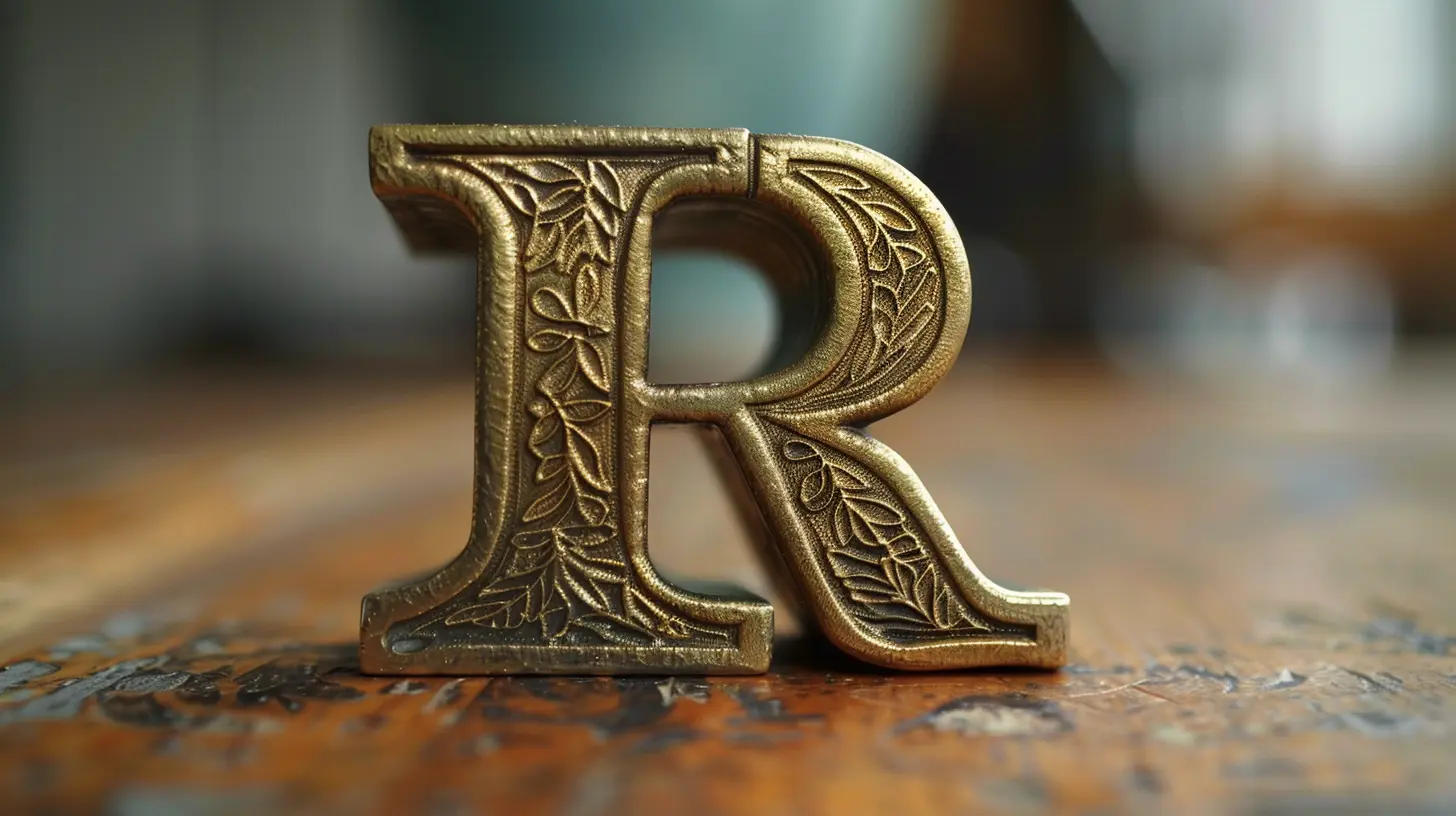Is a Roth IRA Right for You? Key Factors to Consider
30 July 2025
Let’s face it—retirement planning isn’t exactly what most of us dream about while sipping our morning coffee. But here’s the deal: the sooner you wrap your head around it, the more future-you will thank you. One of the popular tools in the retirement world? The Roth IRA.
So, you’ve been hearing the buzz, maybe a friend or your financial advisor mentioned it. But now you’re wondering—"Is a Roth IRA actually right for me?"
Great question. And you're in the right place.
We’re breaking down everything you need to know (and probably a few things you didn’t know you needed to know) about Roth IRAs. This isn’t some cookie-cutter financial advice. We’re talking real-life stuff, tailored to how you actually think and live.
What Is a Roth IRA, Anyway?
Let’s start from square one.A Roth IRA is a type of individual retirement account (IRA), but with a twist. Unlike Traditional IRAs, where you get a tax deduction now and pay taxes later, Roth IRAs work in reverse. You contribute after-tax dollars today, and—here’s the magic—your withdrawals in retirement are completely tax-free.
Yep, you read that right. Tax. Free.
It’s like planting a tree, feeding it with already-taxed dollars, and then enjoying all the fruit later without cutting the government a slice.
Why Do People Love Roth IRAs?
There’s a lot to love, honestly. Here's a quick breakdown:- ✅ Tax-Free Growth: Your investments grow over the years, and you never pay taxes on the gains.
- ✅ Tax-Free Withdrawals: Qualified withdrawals come out completely tax-free.
- ✅ No RMDs: Required Minimum Distributions (RMDs)? Not here. You can leave your money growing forever.
- ✅ Flexibility: You can withdraw your contributions (not earnings) at any time without penalties.
- ✅ Perfect for Younger Investors: Got time on your side? Roth IRAs are like compounding machines.
But, Is a Roth IRA Right for You?
Not so fast. Just because it sounds good doesn’t mean it fits everyone like a glove. Let’s walk through the key factors you should consider before diving in.
1. What’s Your Current Tax Bracket?
This is a biggie.If you’re in a lower tax bracket now than you expect to be in retirement, a Roth IRA is probably a home run. Why? Because you’re paying lower taxes now to avoid higher taxes later.
But if you’re currently in a high tax bracket and expect to be in a lower one during retirement, a Traditional IRA might make more sense. That way, you get the deduction today and pay less tax on withdrawals later.
You’ve gotta ask yourself: “Will I be taxed more today, or in retirement?” That answer leads your way.
2. What’s Your Age?
This might sound like a weird one, but hear me out.The younger you are, the more a Roth IRA makes sense. Why? Because those years of tax-free growth really add up. It’s like starting a garden early—you get more harvests.
If you're in your 20s or 30s and just starting your career, you're likely in a lower tax bracket and have decades for your investments to grow. That’s the golden combo for a Roth IRA.
That said, even folks in their 40s or 50s can benefit, especially if you anticipate higher taxes down the line.
3. Do You Expect Your Income to Increase?
Planning to climb the corporate ladder or grow your business empire?If so, you're probably going to inch into higher tax brackets over time. In that case, paying taxes now while you're earning less makes logical sense. That’s one of the core philosophies behind the Roth IRA.
Basically, think of it as pre-paying your tax bill while it’s still cheap.
4. Are You Eligible?
Here’s where it gets a bit tricky.Not everyone can contribute directly to a Roth IRA due to income limits. For 2024:
- If you're single and earn over $153,000 (or $228,000 if married filing jointly), you can’t make direct contributions.
- Between $138,000–$153,000 (single) or $218,000–$228,000 (married), you can contribute a reduced amount.
Too rich for a Roth? Don’t worry—you still have options. Ever heard of a Backdoor Roth IRA? It’s a workaround worth looking into.
5. How Important Is Flexibility to You?
Here’s something you don’t always get with retirement accounts: access to your money.With a Roth IRA, you can withdraw your contributions (not the growth) at any time, tax- and penalty-free. No 10% early withdrawal fee. No tax forms. Nada.
That makes it a great backup emergency fund. Of course, it's best to leave it untouched, but sometimes life throws curveballs, right?
6. Do You Want to Avoid RMDs?
Traditional IRAs (and 401(k)s) come with Required Minimum Distributions starting at age 73. That means whether you like it or not, Uncle Sam wants his slice of the retirement pie.But Roth IRAs? No RMDs during your lifetime.
Let that sink in.
That means you can let your account grow untouched and leave it as a tax-free gift to your kids or grandkids. For estate planning purposes, that’s huge.
7. What’s Your Investment Strategy?
Roth IRAs aren’t just savings accounts—they’re investment accounts. That means you can (and should) invest in stocks, bonds, ETFs, or other assets inside your Roth IRA.Here’s the kicker: since your gains are tax-free, you might want to take more growth-oriented, higher-risk investments inside your Roth. More growth = more tax-free returns.
It’s like putting rocket fuel inside a car that never pays road tax.
8. Are You Self-Employed or a Business Owner?
If you’re self-employed, you’ve got access to retirement tools like SEP IRAs or Solo 401(k)s, but you can still use a Roth IRA too.In fact, a combo approach can work beautifully. Sock away big bucks into your Solo 401(k), then funnel a smaller amount into your Roth IRA for tax-free growth.
Diversification isn’t just for stocks—it’s for tax strategies too.
9. Are You Planning for Your Heirs?
We touched on this earlier, but it’s worth repeating.Roth IRAs are powerful inheritance tools. While heirs will need to start taking distributions, those distributions are—yep—still tax-free.
If passing on wealth is important to you, and you want your family to avoid tax headaches, a Roth IRA is a pretty generous gift.
Think of it as leaving behind a tax-free legacy.
10. What About Contributions and Limits?
For 2024, the Roth IRA contribution limits are:- $6,500 per year if you're under age 50
- $7,500 per year if you’re 50 or older (thanks to the “catch-up” rule)
It’s not a huge amount, but the impact over time is wild, especially with compound interest in play.
Little drops of water make an ocean, right?
Bonus: Roth vs. Traditional — A Quick Comparison
| Feature | Roth IRA | Traditional IRA ||--------|----------|-----------------|
| Tax on Contributions | Paid now | Tax-deductible (maybe) |
| Tax on Withdrawals | None (if qualified) | Fully taxable |
| Income Limits | Yes | Yes (for deductions) |
| RMDs | None | Yes, at age 73 |
| Ideal Candidate | Younger, rising income | Higher income now, lower later |
So, Should You Open One?
Now for the million-dollar question: Is a Roth IRA right for you?Let’s boil it down.
A Roth IRA is likely a great move if:
- You’re young and expect to earn more later
- You prefer tax-free retirement income
- You want flexibility with your money
- You plan to leave money to heirs
- You value long-term investment growth without tax headaches
It might not be your best option if:
- You’re maxing out employer retirement plans already and want immediate tax savings
- You’re well above the income limits (though again, there’s the backdoor method)
- You expect your tax bracket to drop significantly in retirement
But honestly? For many people, having at least some of their retirement savings in a Roth is a solid plan. Tax diversification is like financial sunscreen—you might not feel its benefits every day, but down the line, you’ll be glad it was there.
Final Thoughts
At the end of the day, a Roth IRA isn’t a one-size-fits-all solution. But it is a powerful tool, especially if you understand how to wield it.The most important thing is just to start. Whether it’s $50 a month or the full $6,500 a year, building a Roth IRA now could mean living a lot more comfortably later.
So, take a good look at your income, your goals, and your future plans. Ask yourself: "Would future-me be proud of the decision I'm making today?"
If future-you is lounging somewhere tax-free, sipping cocktails on a beach, the answer is probably yes.
all images in this post were generated using AI tools
Category:
Roth IraAuthor:

Eric McGuffey
Discussion
rate this article
1 comments
Tracie McMillen
Unravel the hidden potential of a Roth IRA—where future wealth whispers its secrets. Are you ready to unlock your financial mystery?
August 28, 2025 at 2:29 AM

Eric McGuffey
Absolutely! A Roth IRA can be a powerful tool for building tax-free wealth. Let's explore the factors to see if it's the right fit for you.


